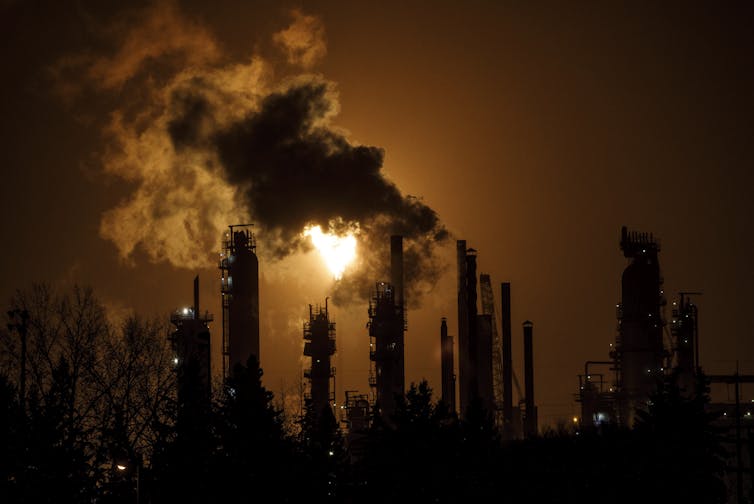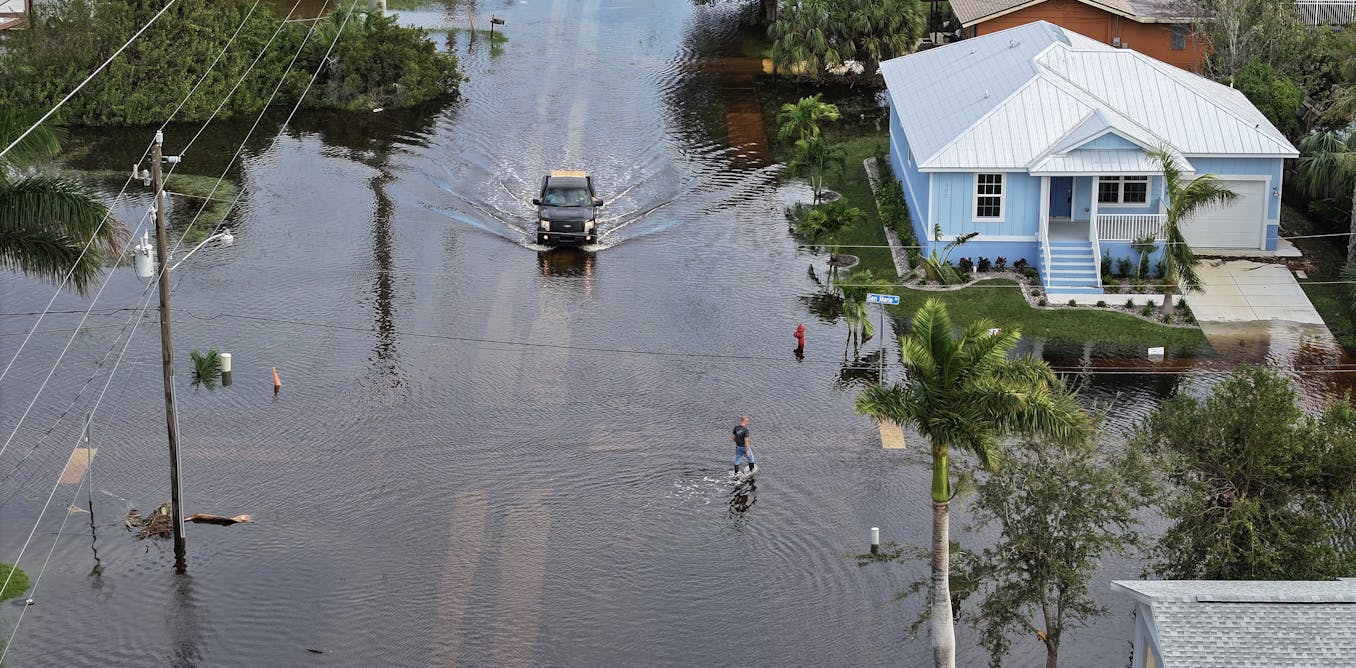Governments in Canada’s major oil and gas producing provinces, Alberta and Saskatchewan, have touted their efforts in recent years to reduce methane emissions.
Methane is a greenhouse gas released into the atmosphere at oil and gas facilities through leaks, vents, maintenance activities and incomplete combustion. Methane traps significantly more heat than carbon dioxide, making it a potent climate pollutant.
We set out to independently verify if government claims of decreasing oil and gas methane emissions were accurate. Our new study shows that the answer is yes — but with important caveats and valuable lessons for Canada’s energy sector.
We studied satellite observations between 2019 and 2023 to understand how methane emissions rates in Canada’s main oil-producing region were changing. We focused on the heavy oil belt near Lloydminster, Alta., where a distinctive extraction method known as CHOPS (cold heavy oil production with sand) has long been associated with notable methane emissions.
CHOPS brings a mix of oil, water, sand and gas to the surface. The oil is collected, but the co-produced gas — which is mainly methane — has historically been vented or flared.
Observing emissions from space
Methane emissions can now be monitored from space, offering a powerful vantage point. Satellites can be used to independently measure and monitor emissions, helping to better understand and confirm emissions in regions where ground-based or other data are lacking.
To track changes over time, we evaluated the ratio of methane emissions to the energy produced, a measure known as emissions intensity. This metric provides an important benchmark for understanding how efficiently energy is being produced and how effectively emissions are being managed, regardless of production rates, which can change over time.
Satellites also pass over the same locations repeatedly, over days or weeks, enabling tracking of emissions over time. This can capture how emissions may be responding to policy changes, new technology or economic shifts. The large scale of satellites can average out day-to-day fluctuations from individual sites.
THE CANADIAN PRESS/Jeff McIntosh
While satellite data provide unique coverage, they have limitations. Cloud cover, sun angle, terrain and other atmospheric or surface conditions can reduce effectiveness. In our study, we overcame these limitations with new techniques using data from the European Space Agency’s Tropospheric Monitoring Instrument aboard the Sentinel-5 Precursor satellite.
We combined those with a mass balance emissions flux model to estimate emissions from 2019 to 2023. This method was effective within the context of this study, but it may not work elsewhere, particularly where satellite observations are even more limited.
What we found was striking. Methane emissions in the Lloydminster heavy oil region declined by approximately 71 per cent between 2019 and 2023, and the intensity of methane emissions dropped by 63 per cent, reaching 0.69 gCH₄ per megajoule of energy produced.
The reasons for these reductions are likely multifaceted. Improved regulations, greater adoption of gas capture and combustion systems and enhanced operator compliance have all likely contributed to lower emissions. At the same time, a decline in oil production during portions of the study period likely played a role in driving emissions downward.
Distinguishing between efficiency-driven and production-driven reductions remains an important focus for future research, as rising production could reverse some of these gains.
These findings indicate that between 2019 to 2023, CHOPS operations are becoming less polluting and progress toward emission reductions is being achieved, even within one of Canada’s most methane-intensive oil-producing areas.
Measurement-reporting gap
Our satellite-based emissions estimates, however, were about 4.5 times higher than industry-reported values for the region. This gap underscores the flaws in traditional emissions reporting frameworks, which may not fully capture all emissions, sources or reflect real-time changes in operations.
This difference highlights the importance of independent measurement. Satellite and other measurement-based data can complement conventional reporting, providing a clearer and more dynamic picture of regional methane trends.
The study shows that substantial emissions reductions are achievable, even in mature oil fields with complex infrastructure, without fully curtailing production. This finding provides a valuable example for energy-producing regions pursuing practical pathways to decarbonization.

THE CANADIAN PRESS/Jason Franson
Reducing methane emissions
Methane is a short-lived but highly potent greenhouse gas and can trap much more heat than carbon dioxide. However, it breaks down relatively quickly in the atmosphere — around 12 years. Cutting methane emissions offers one of the fastest and most cost-effective ways to slow global warming.
Unlike many emerging climate technologies that remain costly or unproven at scale, methane mitigation can be implemented immediately using existing tools and proven methods. For example, a fraction of proposed private sector investment into expensive and highly uncertain emissions reduction technologies and projects could yield substantial and quick greenhouse gas emissions reductions from Canada’s oil and gas sector if redirected to mitigating methane.
There are benefits to industry for taking strong action on methane, including cost savings through efficiency improvements, increasing marketable gas volumes and securing access to premium markets demanding increasingly low-carbon oil and gas.
While Canada has struggled to meet its climate goals, progress is evident at the regional level. The reductions observed near Lloydminster suggest that emissions control and energy production can coexist when supported by sound policy, modern technology and transparent monitoring.
If Canada wants to achieve its commitment of cutting oil and gas methane emissions by 75 per cent by 2030 relative to 2012 levels, more independent measurement and monitoring efforts, such as those demonstrated in our study, are needed.
These are necessary to confirm whether regulations and other initiatives are delivering results, to guide future policy developments and to credibly demonstrate reductions.

The post “Satellite data shows methane emissions are declining in part of Canada’s oil patch, but more monitoring is needed” by Chris Hugenholtz, Professor, Geography, University of Calgary was published on 10/22/2025 by theconversation.com







































Leave a Reply